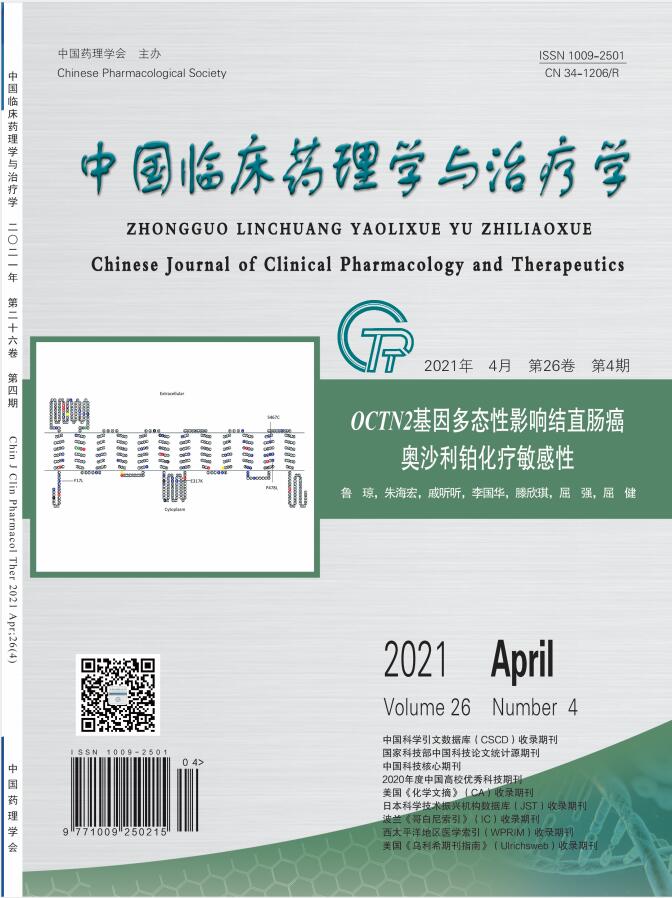Correlation between the expression of RON protein and CXC chemokine receptor 4 protein and abiraterone resistance in patients with castration-resistant prostate cancer
WEI Songchang, YANG Hongqi, ZHANG Hongjuan, SHI Xiaoli, REN Kaiwen
2021, 26(4):
414-422.
doi:10.12092/j.issn.1009-2501.2021.04.009
 Asbtract
(
350 )
Asbtract
(
350 )
 PDF (2748KB)
(
249
)
Related Articles |
Metrics
PDF (2748KB)
(
249
)
Related Articles |
Metrics
AIM: To study the correlation between the expression of recepteur d'origine nantais (RON) protein and CXC chemokine motif receptor 4 (CXCR4) protein and abiraterone resistance in patients with castration-resistant prostate cancer (CRPC). METHODS: From January 2017 to February 2020, 127 patients with CRPC who were treated with abiraterone in our hospital were selected. According to the status of drug resistance, they were divided into observation group (n=32, patients with abiraterone resistance) and control group (n=95, patients in remission). Immunohistochemistry and Western blot analysis were used to compare the expression of RON and CXCR4 protein between the two groups. Logistic regression analysis was used to conduct single-factor and multi-factor analysis of RON, CXCR4 protein and drug resistance, and receiver operating characteristic curve (ROC) and area under ROC (AUC) were used to analyze the value of RON and CXCR4 protein in predicting drug resistance. In addition, RON and CXCR4 inhibitors were added to abiraterone-resistant cell lines. The effects of the two on the apoptosis indicators of abiraterone resistance [caspase-3, caspase-9, apoptosis rate] were observed. RESULTS: Immunohistochemistry showed that the positive expression rate of RON in the observation group (71.88%, 23/32) was higher than that of the control group (27.37%, 26/95). The positive expression rate of CXCR4 in the observation group (65.63%, 21/32) was higher than that of the control group (12.63%, 12/95). Western blot detection showed that the RON and CXCR4 proteins in the observation group were higher than those in the control group (P<0.05). RON and CXCR4 protein were positively correlated with drug resistance (P<0.05). After adding RON and CXCR4 inhibitors, the expression of RON and CXCR4 was successfully inhibited, and the rates of caspase-3, caspase-9 and cell apoptosis were higher than those of abiraterone-resistant cell lines (P<0.05). The cell migration and invasion detected by Transwell experiment showed that inhibiting the expression of RON and CXCR4, the number of cell migration and invasion cells were significantly reduced (P<0.05). The AUC of RON protein predicting abiraterone resistance was 0.789, the cut-off value was>4.11, the sensitivity was 84.37%, and the specificity was 61.05% (P<0.05). The AUC of abiraterone resistance predicted by CXCR4 protein was 0.825, the cutoff value was>3.42, the sensitivity was 75.00%, and the specificity was 80.00% (P<0.05). The AUC of RON+CXCR4 protein predicting abiraterone resistance was 0.884 (95%CI: 0.815-0.934), the sensitivity was 87.50%, and the specificity was 83.16% (P<0.05). CONCLUSION: The expression of RON and CXCR4 protein in CRPC patients increases significantly, which is closely related to the resistance of Abiraterone in patients and is expected to become a marker for predicting drug resistance. Inhibiting the expression of RON and CXCR4 proteins can promote the apoptosis of CRPC abiraterone resistant cells.


